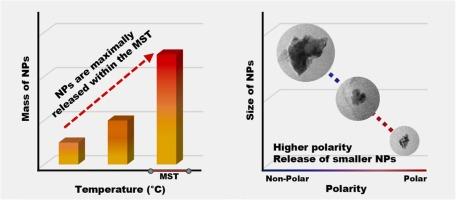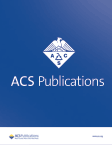Nanoplastic Release from Disposable Plastics: Correlation with Maximum Service Temperature
IF 2.9
Q2 PUBLIC, ENVIRONMENTAL & OCCUPATIONAL HEALTH
引用次数: 0
Abstract
The potential for bioaccumulation of nanoplastics (NPs, <1 µm) increases as the particle size decreases. Since several disposable plastic products used daily may release NPs, their intake may be unavoidable. Therefore, it is crucial to examine the release patterns of NPs from these products. This study investigates the relationship between NP release and the Maximum Service Temperature (MST) of five plastic types, confirming the correlation under real-world conditions. The releasing tendencies of NPs were investigated using plastic pellets. We simulated the packaging of hot food in plastic containers, considering the physical dynamics of food delivery, and replicated cooking in an oven and microwave. We observed that the mass of NPs released tended to reach its maximum at the material's MST. In real-life conditions, the release of NP was found to increase with higher container content temperatures and longer packaging or cooking durations. Physical impacts were confirmed to be the most significant contributors to NP release. Moreover, Higher microwave power levels lead to greater NP release, with polar materials releasing more NPs compared to non-polar materials. Consequently, to minimize NP ingestion, it is recommended to use containers made from non-polar materials with a high MST.

一次性塑料中的纳米塑料释放:与最高使用温度的关系
纳米塑料(NPs,1 µm)的生物累积潜力随着颗粒尺寸的减小而增加。由于日常使用的一些一次性塑料产品可能会释放出 NPs,因此摄入 NPs 可能是不可避免的。因此,研究这些产品的 NPs 释放模式至关重要。本研究调查了五种塑料制品的 NP 释放与最高使用温度(MST)之间的关系,证实了实际条件下的相关性。我们使用塑料颗粒研究了 NPs 的释放趋势。考虑到食品运送的物理动态,我们模拟了热食品在塑料容器中的包装,并复制了在烤箱和微波炉中的烹饪过程。我们观察到,释放的 NPs 质量往往在材料的 MST 达到最大值。在实际条件下,我们发现随着容器内容物温度的升高和包装或烹饪时间的延长,NP 的释放量也会增加。物理影响被证实是导致 NP 释放的最主要因素。此外,较高的微波功率水平会导致更多的 NP 释放,与非极性材料相比,极性材料会释放更多的 NP。因此,为了尽量减少 NP 的摄入,建议使用具有较高 MST 的非极性材料制成的容器。
本文章由计算机程序翻译,如有差异,请以英文原文为准。
求助全文
约1分钟内获得全文
求助全文
来源期刊

ACS Chemical Health & Safety
PUBLIC, ENVIRONMENTAL & OCCUPATIONAL HEALTH-
CiteScore
3.10
自引率
20.00%
发文量
63
期刊介绍:
The Journal of Chemical Health and Safety focuses on news, information, and ideas relating to issues and advances in chemical health and safety. The Journal of Chemical Health and Safety covers up-to-the minute, in-depth views of safety issues ranging from OSHA and EPA regulations to the safe handling of hazardous waste, from the latest innovations in effective chemical hygiene practices to the courts'' most recent rulings on safety-related lawsuits. The Journal of Chemical Health and Safety presents real-world information that health, safety and environmental professionals and others responsible for the safety of their workplaces can put to use right away, identifying potential and developing safety concerns before they do real harm.
 求助内容:
求助内容: 应助结果提醒方式:
应助结果提醒方式:


